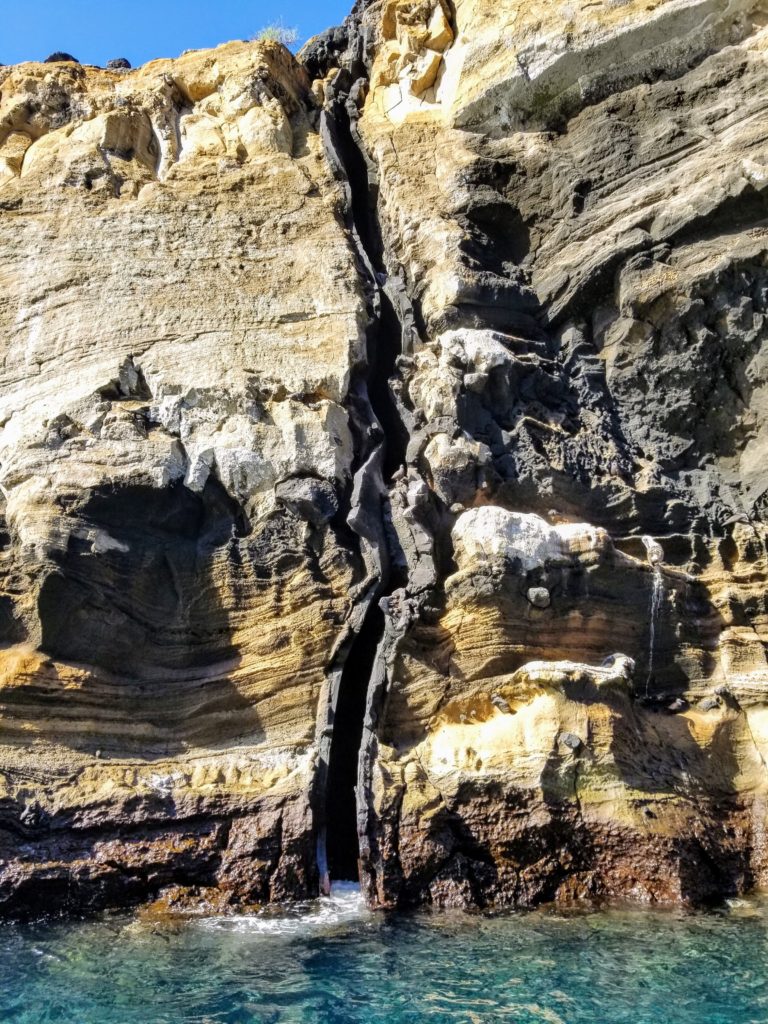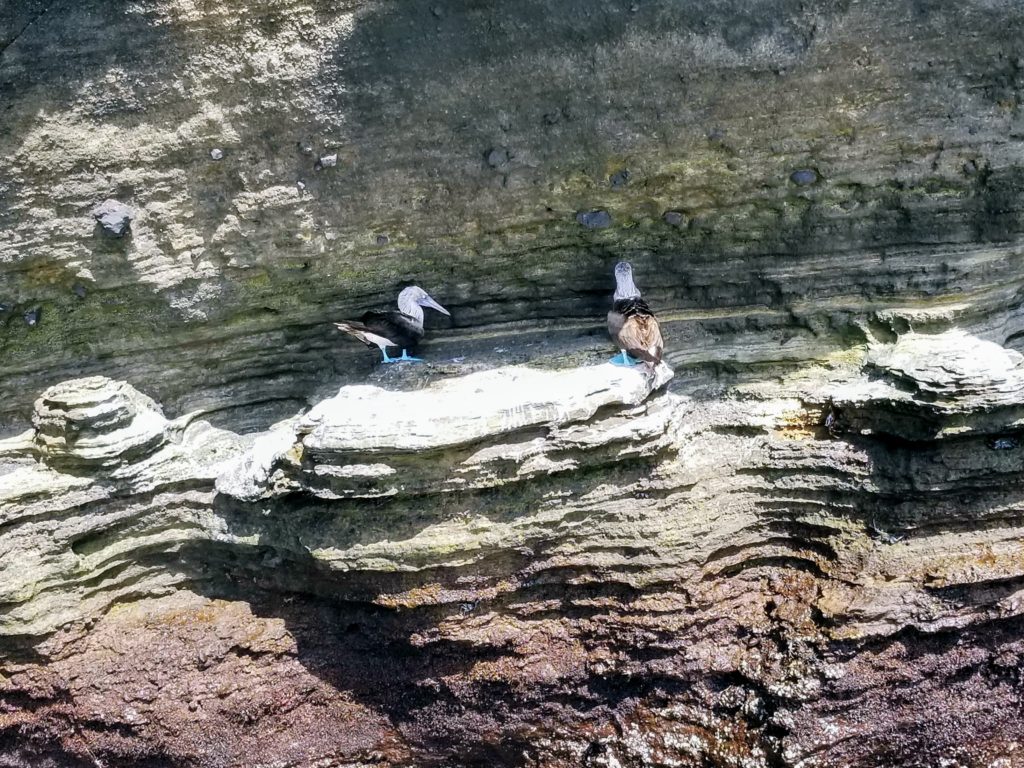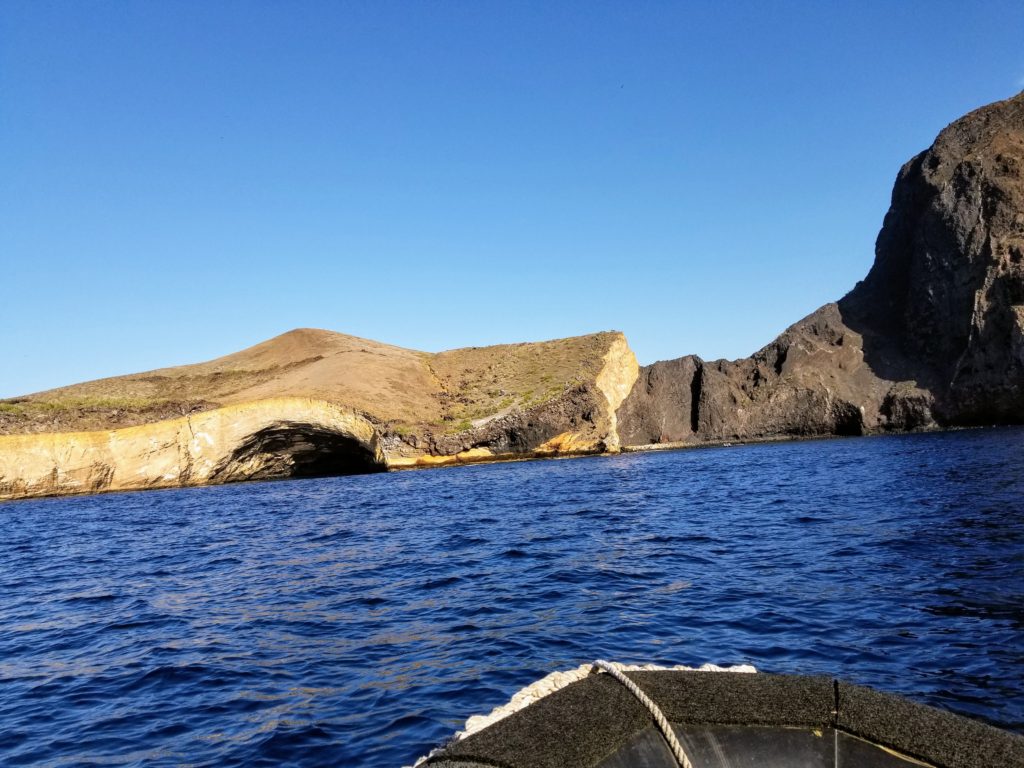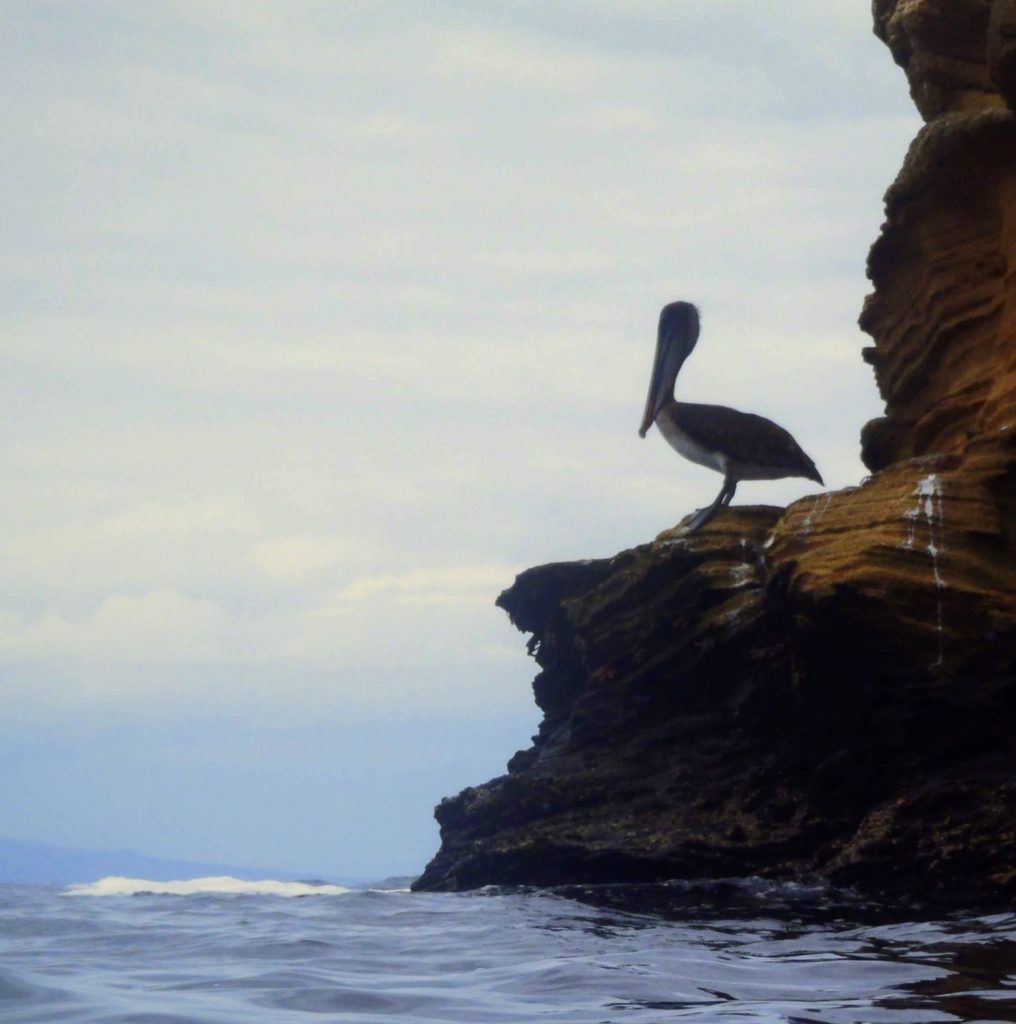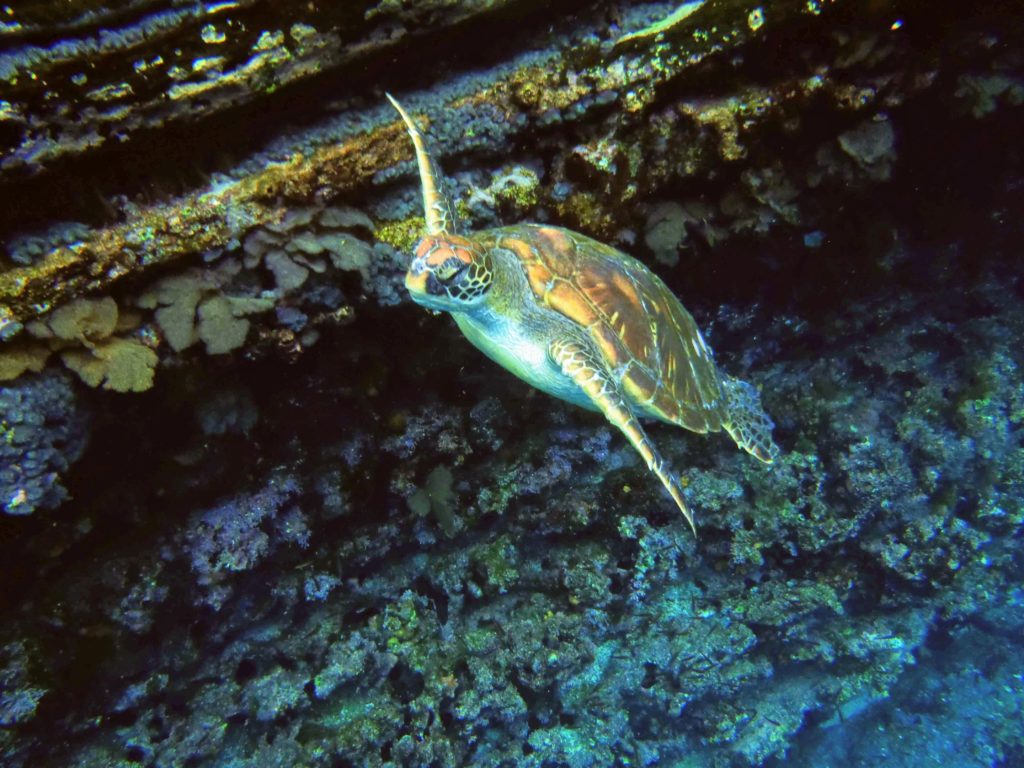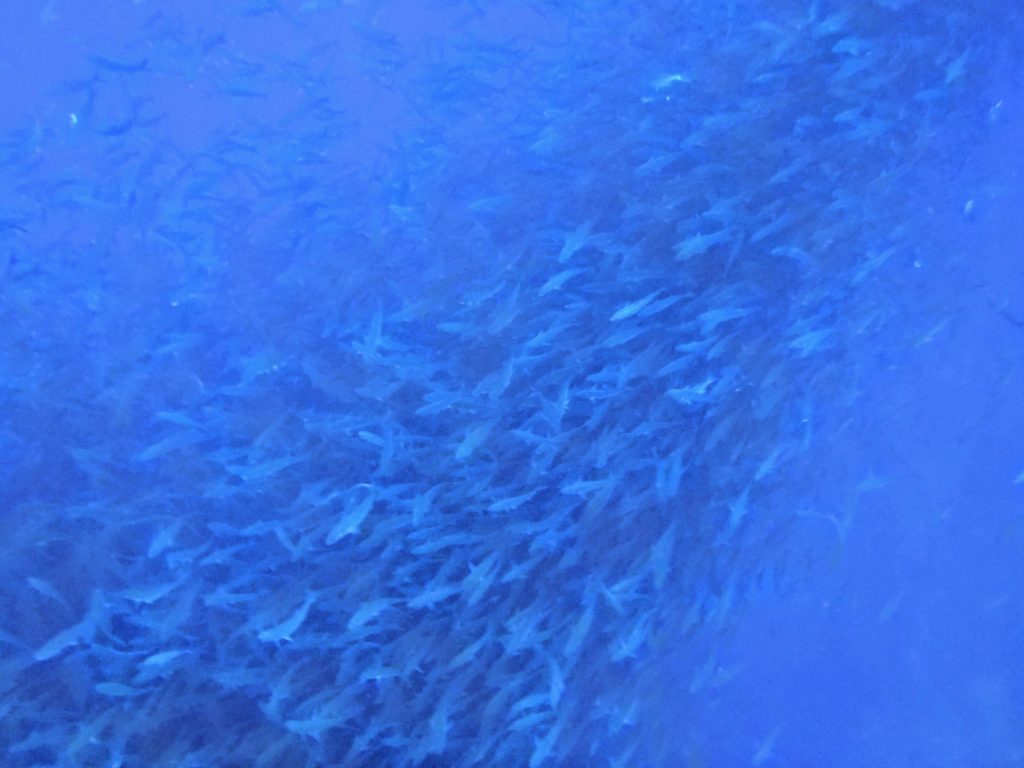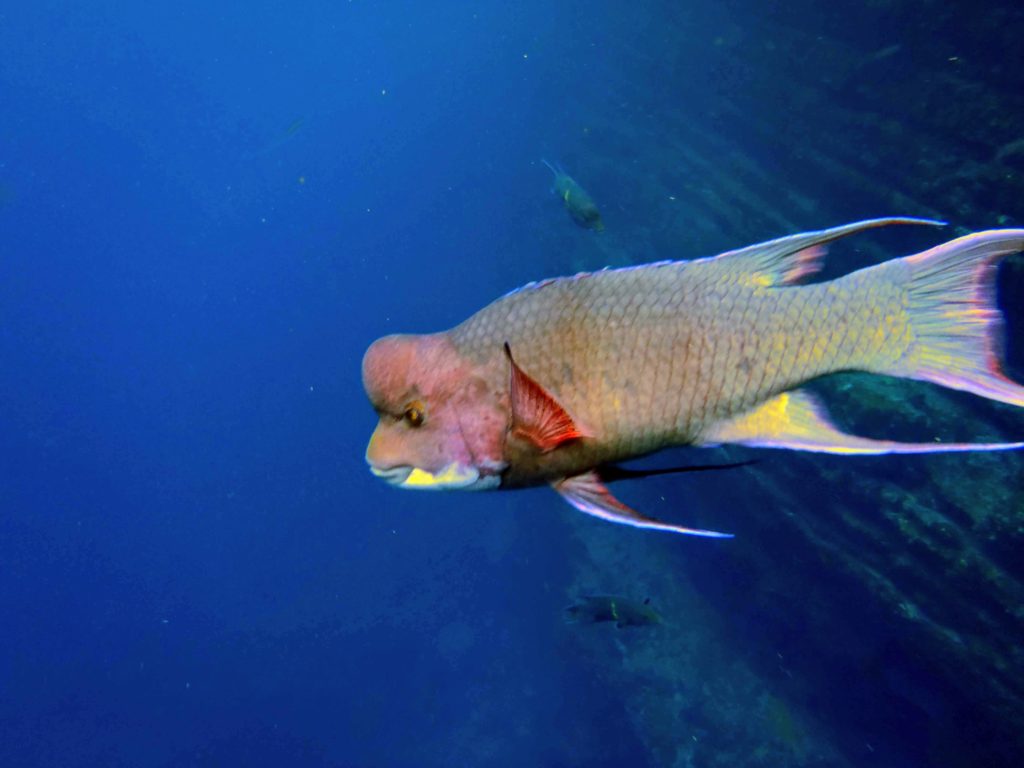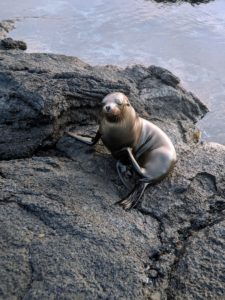Galapagos - marine iguanas
In our previous post, we highlighted our first penguin sighting with a promise that more surprises awaited us. Sure enough, our next surprise was the very next day - marine iguanas.
But first - dolphins
This morning, we are in Punta Vicenta Roca, Isabela. On our 7 am Zodiac tour, we were en route to a known fish breeding ground when the guide excitedly spotted a pod of bottle nosed dolphins. So we quickly changed course and followed them for a bit. Absolutely beautiful creatures!
Watch an unexpected dolphin visit
Birds and rocks are strangely fascinating
After that, we headed toward the sheer cliffs of Fernandina island and found blue footed boobies, pelicans, cormorants and giant frigate birds. The cliffs were really interesting geologically as well; it was easy to see where lava flowed right through existing rock during eruptions and lots of interesting strata showing uplifts. The water was clear enough we could see fish down at least 10 - 15 feet below the surface. Sea lions and turtles were easily seen as well.
Snorkeling before lunch
By 10:30 we were back on the zodiac, this time for some snorkeling. The sea lions are very playful and come right up to you to play. Giant sea turtles gracefully swim past; giant schools of fish meander underneath. We saw several sharks (not the dangerous type) as well. It was fun to see from underwater what we saw earlier from above water.
We had lunch outside at the grill - I had grilled fish and Sue had an anchovy pizza - why not? After lunch there's another lecture and then at three we are ready for our nature hike.
By afternoon we arrived at Punta Espinza, Fernandina.
Marine Iguanas
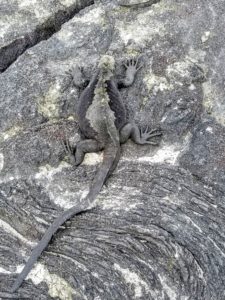
The nature walk was among the most interesting we’ve ever been on. Since it was low tide, the man-made dock was inaccessible and instead the zodiac made landfall at a newly formed lava field. The rocks were very irregular and slippery which made walking a bit slow. No worries, the crew was there to lend a helping hand. Once on shore, we walked on a sandy mix of shells and volcanic ash.
We were immediately met by a slumbering mound of marine iguanas. We could see these prehistoric looking animals slowly coming ashore. Each one climbed over and on top of others to dry out and sleep. They come ashore for warmth and bake in the sun. Even though they are not friends or family, these reptiles have evolved group behaviors that help them survive and transcend “friend” status. It was so easy to mistake a mass of marine iguanas with a recent lava flow since the colors and overall shape were identical. Perhaps another adaptation.
Hawks and sea lions and more marine iguanas
We got a great look at a Galapagos hawk and her young offspring. These are the apex predators in the Galapagos and they keep a sharp watch for young or weak iguanas as well as fish. We were able to get with 10 feet of the young hawk.
-
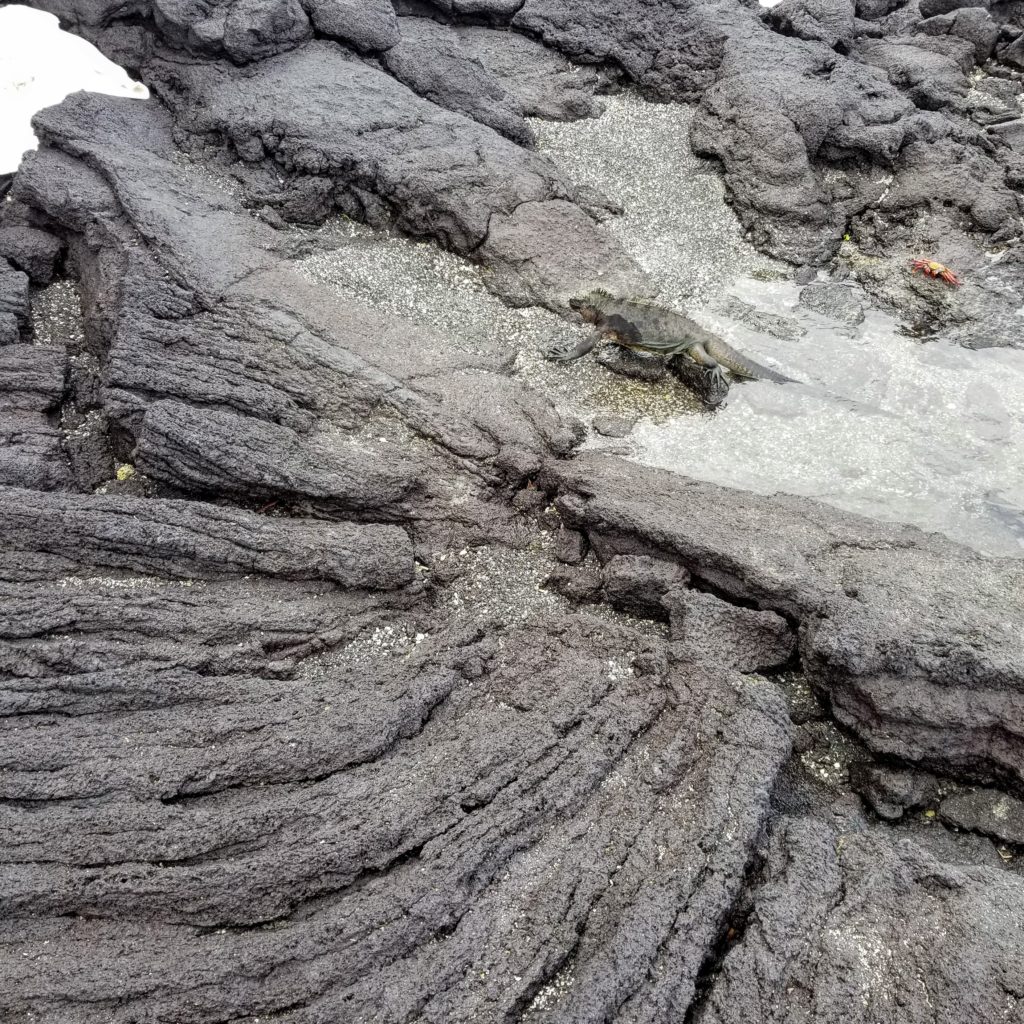
Marine Iguana making landfall for the evening -
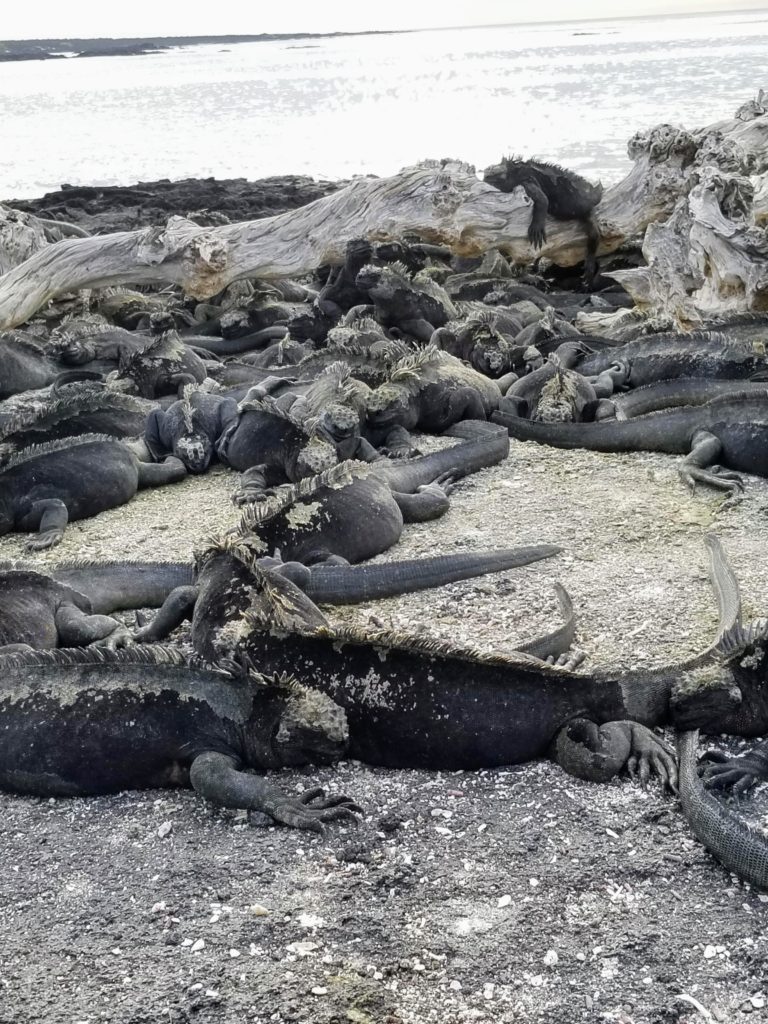
Marine iguanas Galapagos -
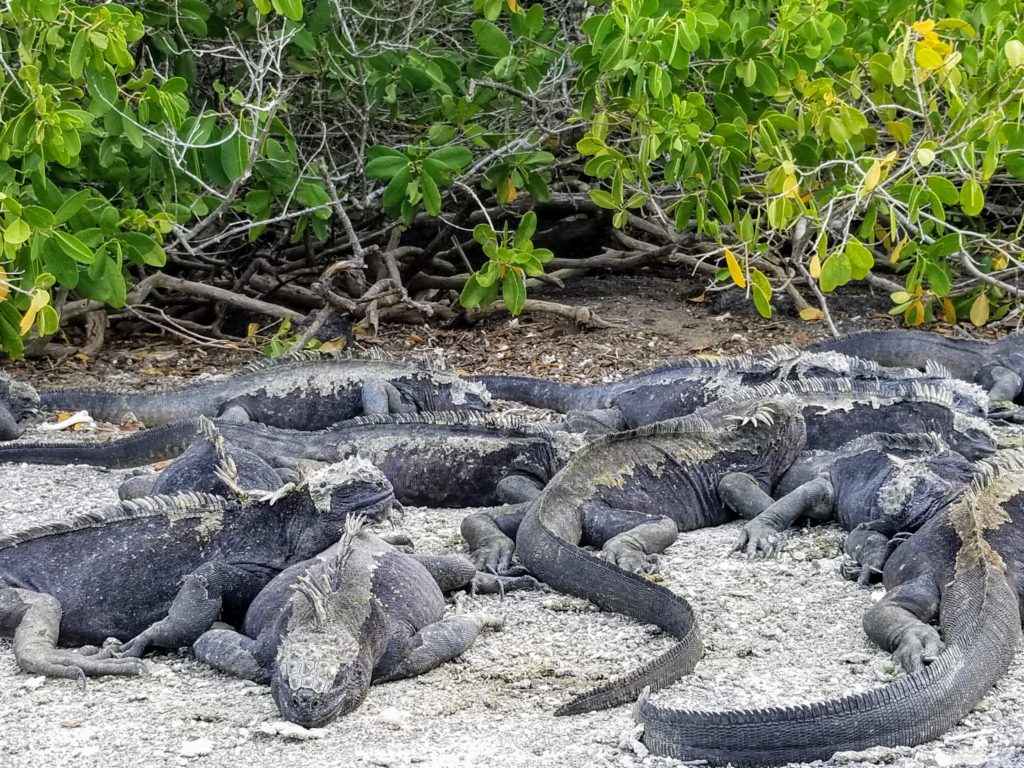
It was to avoid stepping on the iguanas
Sea lions, on the other hand came right up to us. Most were simply sleeping on the ground but several were playing in the calm waters of a lagoon. In fact it was a family whose young sea lions apparently wandered into the water too soon (wasn’t quite low tide yet) and the father (bull) loudly barked for them to retreat back to the sand. One obeyed, the other sneaked past. The lagoon also was home to several sea turtles; this was a cleaning station for them. Of course there were crabs everywhere, scavenging everything, even the iguanas. And of course, more marine iguanas.
Riding off into the sunset
We happened to be the last zodiac off the island. So it was absolutely peaceful and serene. As we rode back to the ship, the sun was setting, which was perfect metaphor for our day. It was so busy and active but also calm. There’s something about interacting with such diverse life that somehow leads to tranquility - an orange glow giving way to darkness.
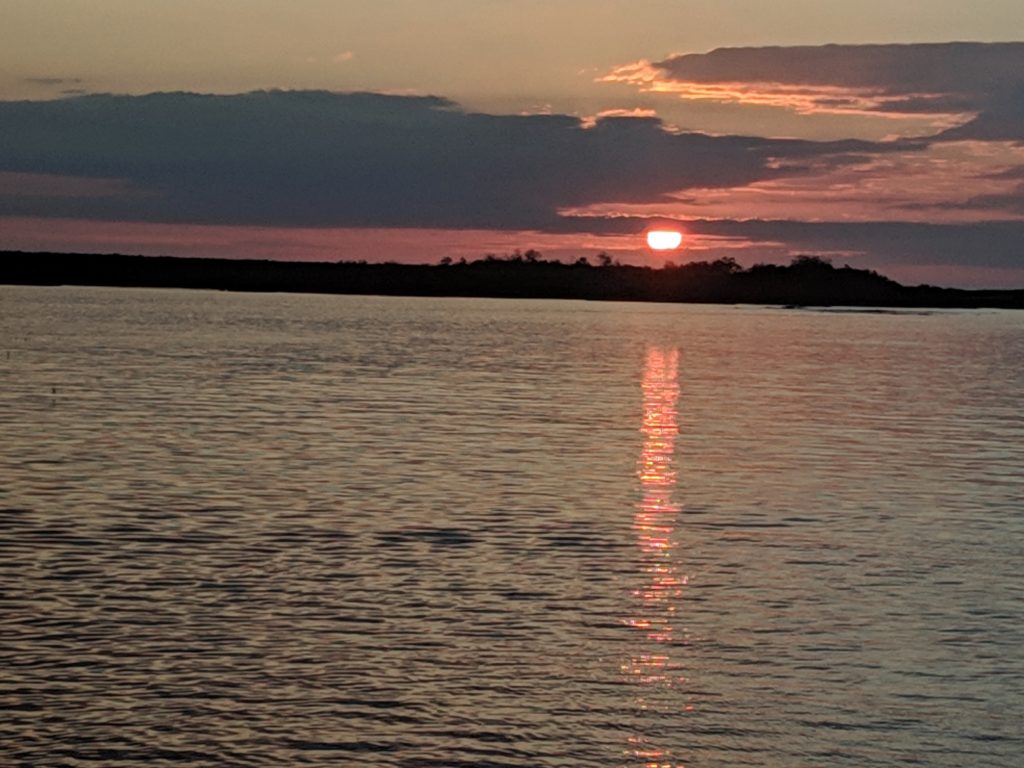
We had a great dinner. Grilled shrimp with quinoa and wild rice, and the crab appetizer was great and as was the salad.
It's hard to believe this is only our second day. Yesterday penguins, today marine iguanas, not to mention dolphins, sea turtles and tons of fish. Yet we know tomorrow brings another adventure.
Catch up on our initial posts of this series:
And click here if you want to learn more about marine iguanas.
Our parting thought today is marine iguana walking on land. Simply prehistoric.
Next: Be sure to check out our next day's post featuring life in the mangroves.
Watch the iguanas move. They pile up for warmth.

